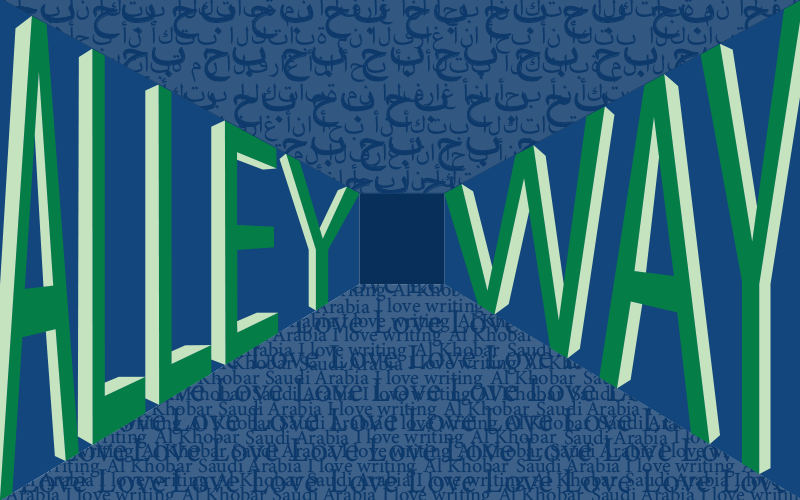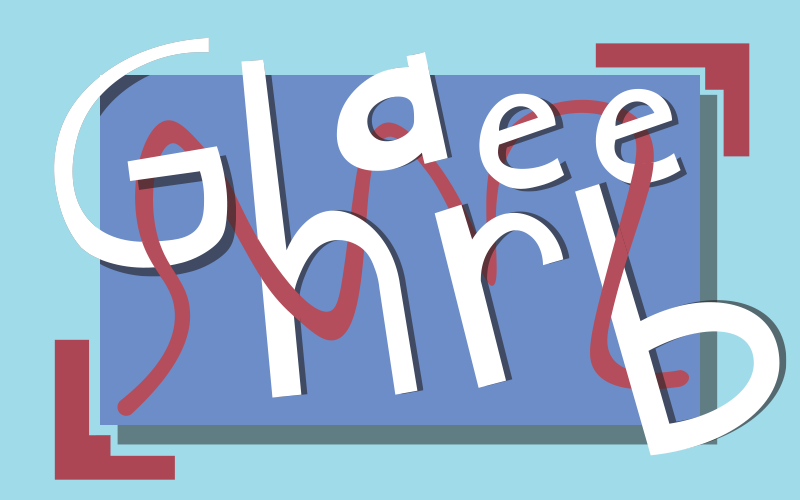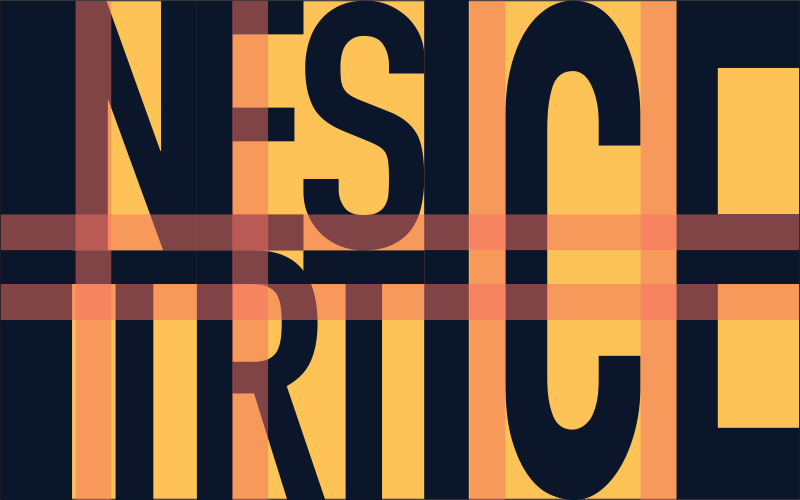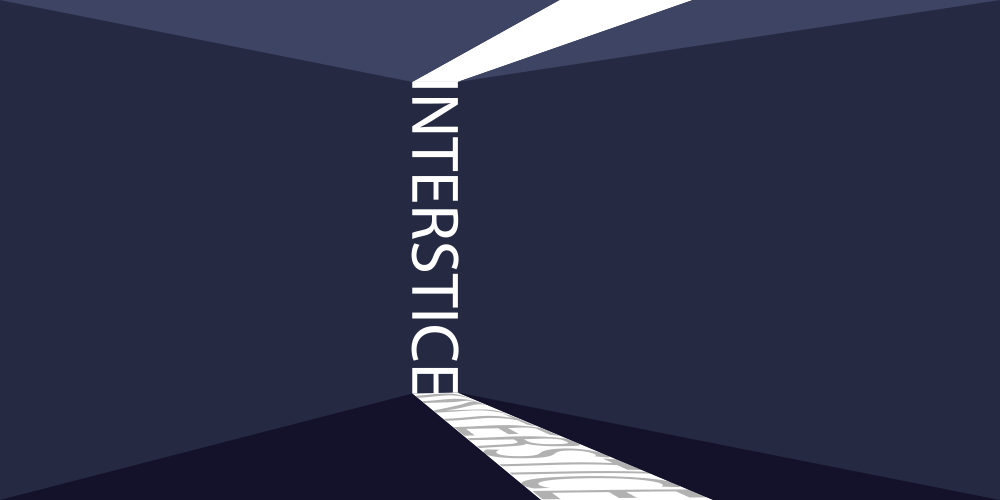Al Khobar, Saudi Arabia 2018
There is boomtown energy on the pavement tonight. Bodies crowd the curb, sand-scoured vehicles fly past, and the electric clatter of neon is always in the eye. There is a honk from a taxi behind me and the sizzle of meat on a spit. In this part of town, they sell fresh roses and small birds that tremble in baskets made of straw. The building on the corner is covered in fliers posted by people needing roommates: Pinoy wanted, Pinoy only, Pinoy required. A stray elbow nudges me into a shop window; I see Wedgewood crystal, vacuum cleaners, and shelves of vintage Barbies.
Khobar was a small fishing village until oil, discovered in commercial quantities in 1938 at nearby Dhahran Well No. 7, changed everything. The village became a town became a city, digesting soil and distance, blooming arteries of asphalt to support the infrastructure of the burgeoning oil industry. Into the new airport, flowed workers from around the world, and to this day Khobar remains the only city in the Kingdom where expats, mostly from India, the Philippines, and Pakistan, make up a majority of the population.
The Khobar street is different things at different times of the year, at different times of day, even, but it is always fast. I was born here and I learned to walk on these busy streets, in the dim back alleys and crowded sidewalks, and I have never stopped. Something inside of me, fomented in some subterranean passage, says go — and I do.

Hamala, Bahrain 2019
I have a virtual meeting with a writing group. They each live in different countries, scattered around the world. None have been to the Gulf. They say they were surprised when reading my work, that it didn’t revolve around the issues they were expecting. They tell me it would be better if my work explained the Gulf to the outsider. They say they aren’t sure why I include Arabic in the text, particularly since it isn’t italicized. Twice, they ask where I was born. They ask why I don’t write more about America. They tell me if I don’t comment on the veil I am being solipsistic. They tell me I am writing about cities that shouldn’t exist.
I tell them that a thousand years ago Hofuf was a large, bustling market town connected to regional trade networks. It has been 12 years since I last visited the states, I say. I explain my thoughts on the difference between writing about and writing from. I tell them that italicizing languages is to “other” them, which would not be reflective of the transcultural experience I am trying to convey. Even my English is imbued with Arabic syntax, which I don’t want to “correct.” I use the word stereotype. I use the word reductive. I use the words al ghareeb and ruhh al sakan. I say things about the potential of writing that performs the radical act of normalcy, writing that slips between tropes to reveal “the other” as mundane.

Al Hofuf, Saudi Arabia 1992
Holding a hand to the wall of the cave’s interior, I begin my circumnavigation of the space. Soon, I have moved far enough inward that I have lost the sound of my family at the picnic site, where I left them unpacking sandwiches outside. I am alone now and pensive, wrestling with a new understanding that has recently been made clear to me.
I am ten years old and, for the first time, I have begun to understand there is a mismatch between where I am from and where I am from. Born and raised in Saudi Arabia, from a family that has lived here for three generations but is not from here, it is not strange to me but I am learning it is certainly strange to others. Now I know why, when people ask if I’m American, the answer I feel like giving is, “Yes and . . . ”
At home, before this dawning comprehension, I didn’t know to separate in my mind the music we listened to, with Oum Kulthoum on one side and George Strait on another. I didn’t know that Easter and Eid were so very different. To me, tacos for lunch and kabsa for dinner was unremarkable, as was the constantly burning ‘oud, watching Captain Majed followed by Mr. Rogers, and the English infused with Arabic, each language simply another way for words to dance.
I don’t yet know the word interstice, don’t know the meaning of transcultural, but I do know the word “foreigner” and I know that in the Gulf, foreigners are usually foreigners forever. One day we will have to leave, and with no tourist visas yet, when that day comes, it will mean leaving forever.
In the center of the cave, I let my eyes adjust to the absence of light. I linger in the darkness, adjusting my breath so that eventually it is only another silence in the silence.
Muharraq, Bahrain 2019
It is a night at the end of spring and I am at the opening of an art gallery. There are performance artists in the parking lot leaping off of ramps to twist their bodies into impossible shapes and two men with long hair project swirling lights onto the side of the building.
Inside the gallery, there are men in leather jackets and girls in designer abayas that drag in silky puddles along the floor. Standing at the edge of the room, I am telling a group of poets and artists about the writing group’s admonition that I must explain. It is interesting, we agree, to consider what places are expected to make spectacles of themselves for the consideration of the outside world. An artist, dressed in an immaculately tailored thobe, tells us a story from his time at school in the US, where he was asked why the art he makes — gauzy, chaotic fabric installations — isn’t explicitly about his ethnicity or his religion. His eyes twinkle behind rimless glasses when he tells us that he delights in refusing to perform to expectations.
“Whatever you want,” he declares, “I will not give you.”
Manama, Bahrain. 2018
It is noon in the alley of tea. Blue sheets hang overhead snapping in the wind. At the end of the alley, a group of boys watches a football match on a tiny TV swathed in cigarette smoke.
My friend is speaking, emphasizing his points by brandishing a sloshing tea glass high into the air. He is saying that many of the souq’s famous architectural elements are a testament to the Gulf’s transcultural past.
“Like the mashrabiya,” he says, naming a style of projecting lattice-work window, of which the souq boasts many finely carved specimens. “It’s from Egypt originally. Or maybe Iraq. And the wind towers?” he continues, referring to the tall roof structures used before air-conditioning to funnel wind into interior rooms. “They come from Persia.”
I went to high school in Bahrain and in class, we studied the nation’s long history of cultural dynamism. It is an ancient pattern that can be traced back millennia: after the Dilmuns came the Assyrians, then the Babylonians, after the Parthians came the Greeks, then the Qarmatians and the Uyunids and the Usfurids and the Jabrids and the Portuguese. Today, more than half of Bahrain’s population is expatriate, with the largest community being from India.
Moving onto the topic of food, my friend scrutinizes Khaleeji cuisine, speaking about kabsa and shawarma, tikka and luqaimat, tracing influences to India and Lebanon, Turkey and Greece. Then he’s on to Khaleeji music, charting the syncopation from East Africa, the stringed instruments from India, the melodies from the Levant.
As he talks, I am reminded of a question posed by Arianna Dagnino: “What is authentic and what is not? What has ever been . . . Who/what is the Other and who/what is not?”
Consider the criteria that tell us where a person is from: Passport, name, place of birth, the way we wrap our scarf or style our beard. Collected they seem significant, the way signifiers are meant to. But scattered, examined, pulled at, they weaken. Taken individually, they seem almost fragile.
Ilija Trojanow describes culture as a vast river fed by numerous forgotten tributaries. He writes,
the river’s official name conceals the truth of its composition; while the nametag passes into legend and lexicon, the ancestry of confluences becomes invisible […] Our history, regulated by concepts of singularity and pure origin, is as much a cartographer’s invention as the great river. By taking a certain tableau of it to represent culture’s form and essence, it mistakes a snapshot of the river for its whole course.
In this way, we remain unaware of the richly heterogeneous sources of our own cultures; instead, believing them to be timelessly unchanging and unerringly pure, oblivious to the truth that he sums up thusly: “No confluence, no culture.”
The Manama souq makes apparent the reality that cultures are flows of information that funnel uniquely through each of us, changing what they touch even as they themselves are changed in turn. Here in the souq, a place rife with hybrid currents, cultural markers pop and flare: a henna-dyed beard; an overstuffed backpack; a gutra tucked high upon the head cobra style. The pops of information could all mean what I think they mean. Or, they could all mean something — anything — else.
There was a time when I was interested in tracing the paths of where and when cultural flows overlapped, merged, diverged. Like my friend, I wanted to chart every origin story and map each intersection. Now, though, I am wearying of this project. These currents of evidence do not seem to matter to me as much as they once did. Go back far enough and all you find is interstice, everywhere you look.

Al Khobar, Saudi Arabia 2018
My friend picks me up in her father’s old Mercedes. She has just gotten her license. The city we pass through is in a celebratory mood, just a few days ago police officers were handing out roses to female drivers. My friend presses down on the accelerator, and the car, old and stately, carries us past the city limits and into the desert.
Wind scuffs the dunes, a shamal is coming. For an hour we drive, aimless and happy. We stop for gas in the middle of nowhere and then drive in the other direction, circling the city, imagining ourselves endlessly spiraling around it, finding new approaches to take, new ways to perceive it.
When we have driven for so long that we are stiff and aching with the need to get out and move, to let our own bodies carry us through the world, my friend drives me home. A bright cord of connection is pulling tomorrow toward us very quickly, and in it, we will feel the same as we do now. Like everything is possible, and always has been.
Al Khobar, Saudi Arabia 2017
I predict what we will see at the heritage festival before we arrive: there is a falconry display, with sleek birds, their heads swiveling at motion after motion. There are camels, chewing and lumbering. In a small pen near a food truck selling luqaimat and chai, there are horses snorting and flicking their long tails. Near a goat-hair tent, are two Salukis in the back of a pick-up truck, women doing henna, palm frond baskets for sale, an ardah troupe, and men weaving through the crowd carrying smoking bukhoor.
Misconceptions of the Gulf view the region as culturally homogenous, believing that before the advent of the oil age there was no one here who wasn’t from here. But, even at these heritage festivals, which give preeminence to emblems of Bedouin heritage, if you know what to look for you can see traces of foreign influence everywhere: in the swirling designs of the henna, in the spices used in the tea, in the rhythms pounded out on the drums, even in the slowly spinning shawarma meat. As Neha Vora writes, Indian Ocean historians have traced “vast networks of communication, travel, and exchange between Asia, the Middle East, Africa, and the Mediterranean back to before the arrival of oil.” What is new, then, is not a cosmopolitan Gulf society, but the notion that it was ever anything but.
I eat dates and wander, listening to the snorts of the horses and the thunder of the drums, thinking that places contain more stories than can ever possibly be told. I am grateful for the clear line of sight illuminated in the land I call home, for the insistence upon the necessity of meanings many of us overlook.
Al Hofuf, Saudi Arabia 2019
We eat breakfast as we drive — labneh zaatar mana’eesh and a thermos of Karak chai — and watch slow-moving camel herds heading toward the promise of distant green. The Arabian landmass perches on a slight tilt; water flows off of the Western Al Sarawat mountains and slips beneath the Nejdi flatlands, to end up here in the east, collecting beneath Al-Ahsa, a name that means “the sound of water underground.”
Eventually, we ease into the city and find the tall columns of the Hofuf souq draped in honeyed sunlight. For more than 1,000 years, Al Ahsa has been connected to a trade network that linked the people of the Arabian Gulf and Indian ocean, even stretching filaments into East Asia. Being connected to these networks gave Al Ahsa a cosmopolitan feel; in addition to the local population, there were Indians, Baluchis, Afghanis, East Africans, and Persians. When the Ottomans arrived and set up their garrison, a souq quickly sprang up nearby, the ancestor of today’s market.
When I was told, by the writer who had never been to the Gulf, that I was writing about cities that shouldn’t exist, it irked me. Not only because there are very old cities here, like Hofuf, but also because a city’s age doesn’t determine if it is real or not. The implication that the Gulf’s modern oil-boom cities are somehow inauthentic and therefore unworthy of being written about, seems driven by a sense of romantic primitivism, as if the pre-oil era was one of halcyon ease. Positing the Gulf’s pre-oil past as one of isolated purity obscures the historical evidence that reveals the processes of global trade and cultural exchange have existed here for millennia.
A simultaneous — and contradictory — tendency, is to believe only the flashiest, most contemporary Khaleeji stories matter, those about record-breaking skyscrapers and mega-projects springing up out of the sand. When these are seen as the best stories the Gulf has to tell, it reinforces the perception that there was nothing here before oil. There is a whole world that can be found in the interstices, of cultures, of historical trajectories, but they are often obscured by overbearing cliches.
These stereotypes about the Gulf are so powerful that even people who have lived here can fall prey to their influence. In reading the work of other “native-born foreigners” from the Gulf, in blogposts and published pieces, I occasionally find the outsider’s gaze made primary. Decades removed from the Gulf, some seem unaware that their cloistered childhood was not shared by all Gulfi expat kids, a testament to the fact that having an expat experience does not necessarily make one transcultural. When I think about how hard it was for these writers to leave so many years ago, knowing they would not return, I can’t help but reflect on the fact that someday it will be my turn and I will be the one leaving. I wonder what will become of my writing then, and if, motivated by a sense of curdled nostalgia, I will write the Gulf as if it froze in time the moment I left. I know already how easy it is to reach for the simplistic narratives that dominate discourse on the region, rather than allow space for the polyphonic complexity of its stories.
It is when I read Temporary People by Deepak Unnikrishnan that I find the in-between world of the Gulf written by an in-between Gulfi. He describes the United Arab Emirates as “a nation built by people who are eventually required to leave,” and in his magical realist stories, set in the UAE’s South Asian diaspora, men transmogrify into suitcases, expatriate laborers are grown in labs, and multilingual tongues leap from mouths. Temporary People nimbly slips through the reductive narratives produced by the outsider’s gaze and refuses to internalize the one-dimensional understandings often foisted upon the region, demonstrating there is more to expatriate life in the Gulf than ready-made narratives. By challenging simplistic understandings of home and belonging, insider and outsider, periphery and center, Temporary People captures the weirdness of being native to a place you cannot truly claim.
Through conversations with my writing group, I have come to understand that it was this dissonance, the weirdness of being a native-born foreigner, that flummoxed them when they first read my work. It came down to the way transcultural individuals are perceived; born in the interstice, transcultural individuals are indelibly marked by the cultural identity we absorbed as children, and when you have cultural fluency — or fluencies — that you are not expected to have, it clashes with expectations. Too often we mistakenly believe that culture is a genetic trait, that it seamlessly aligns with our nationality or ethnic origin, and cultural identity is still often viewed as an either/or proposition, that we must be one thing or another. Allowance is rarely made for identities that include a “yes and . . .”
After walking for hours, we sit with paper cups of chai haleeb on a cracked curb beneath a listing palm. There are men lounging on an outdoor jalsa, a trio of women walking home with groceries, and a group of teenage boys heading toward the mosque. If I listen closely I can hear the usual tumult of languages, the different people from different places chatting and haggling and commiserating and gossiping. I close my eyes and imagine the stories born in the liminal spaces, the stories that individually seem inconsequential but when gathered up and stacked together make something mottled and diverse, textured and urgent.
Dhahran, Saudi Arabia 2018
In a long, arc-shaped room in the basement of the museum, there is a towering globe. With the smooth slide of a lever, the globe will spin and flash, depicting the geological processes that formed the Arabian landmass over the past 500 million years. I push the lever and landmasses dance and melt before me, shifting with the permutations of volcanoes, tectonic plates, and the slip of ancient oceans. I watch landmasses disassemble, reforming to take the places they occupied 443 million years ago when the Arabian Peninsula was part of a continent known as Gondwana. I watch as 200 million years pass, and the landmass that will become the Arabian Peninsula undulates across the globe to settle, partly underwater, near the equator. Then, 23 million years ago, as the Red Sea Rift drives apart the African Plate and the Arabian Plate, I watch the creation of the Red Sea, a sudden, sloshing influx of water. Millions of years later, the eastern edge of Saudi Arabia begins to appear, revealing the outline of the landmass I know well.
Next to the globe is a two-dimensional map on a circular stand. Here, I watch the interplay of Saudi Arabia’s deserts and learn that given strong enough winds to drive sand particles, dunes can migrate. They become so steep that they collapse under their own weight, sending cascades of sand from the top to the bottom where they slowly pile up. A dune can travel like this, collapsing and reforming, for miles. And if a migrating dune crosses paths with another sand dune, they can even reproduce. These low-speed collisions can result in multiple new dunes as unstable dunes break apart to reform in new ways.
The same land, but never the same. The only constant, change. •




